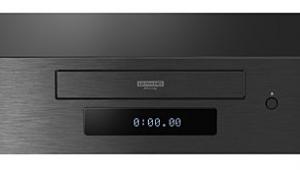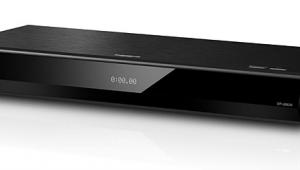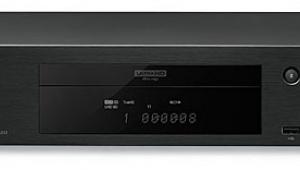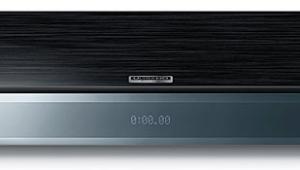Toshiba BDX2700 Blu-ray player
 Price: $200 At A Glance: 802.11n Wi-Fi • VUDU HDX, Blockbuster On Demand, and Netflix streaming • Superb video processing
Price: $200 At A Glance: 802.11n Wi-Fi • VUDU HDX, Blockbuster On Demand, and Netflix streaming • Superb video processing
A Streaming Value
It’s hard to believe that it’s been three years since HD DVD lost the format war. Toshiba bet the farm on HD DVD, and ever since Warner Brothers and several large retailers decided to stop supporting the format, many pundits wondered how long it would take the company to release a Blu-ray player.

In lieu of releasing a Blu-ray player in 2008, Toshiba placed its energy behind DVD upconverting technology with its XD-E500 eXtended Detail Enhancement (XDE) DVD player.
Needless to say, Toshiba’s promise of a near-HD experience in a truly HD world didn’t add up to much. The world was turning Blu, and another upconverting player wasn’t going to draw much of an audience.
Toshiba finally released its first Blu-ray player in 2009 with the BDX2000. It sported Profile 2.0 (BD-Live) compliance but lacked onboard memory and didn’t offer any value-added streaming services found on other players. But at least it was a start. As Bluray has entered the mainstream, it’s become a given that consumers want more than just a disc player when they plunk down their hard-earned cash. Has Toshiba delivered the goods with its latest player, the BDX2700?
Build Quality
My favorite HD DVD player was Toshiba’s HD-XA2, which featured Reon HQV processing and weighed in at a solid 13 pounds. The BDX2700’s build quality isn’t in the same league, weighing only 4 pounds. In fact, when the box arrived via FedEx, I wondered if it was empty because of its featherlike weight. Granted, with a $200 MSRP, you can’t expect the same build as a player that retails for more than twice as much.
Despite its dainty build, the BDX2700 has most of the necessary requirements to provide a solid user experience. The sparse front panel includes Power, Eject, Play, and Stop buttons, along with an SD card slot to add memory for BD-Live compliance (no memory included) or to access music and photo files. The dimmable front display has a large font, so it’s easy to read from across the room. Unfortunately, the Blu-ray logo doesn’t dim unless you choose to completely black out the front panel. That’s the preferred state considering that the logo could lead ships into harbor on a foggy night.

This is strictly a 2D player. Rear connections include HDMI 1.3 with Deep Color support, component video, and composite video outputs. Audio connections include optical TosLink (no S/PDIF coaxial), stereo analog, and 7.1-channel analog outputs for owners of legacy AVRs without HDMI. If you have an Ethernet run to your equipment rack, you can take advantage of the supplied Ethernet jack, or you can go wireless with the built-in 802.11n Wi-Fi. Toshiba also includes a USB input on the rear panel, so you have two choices on the type of memory you can add.





























































